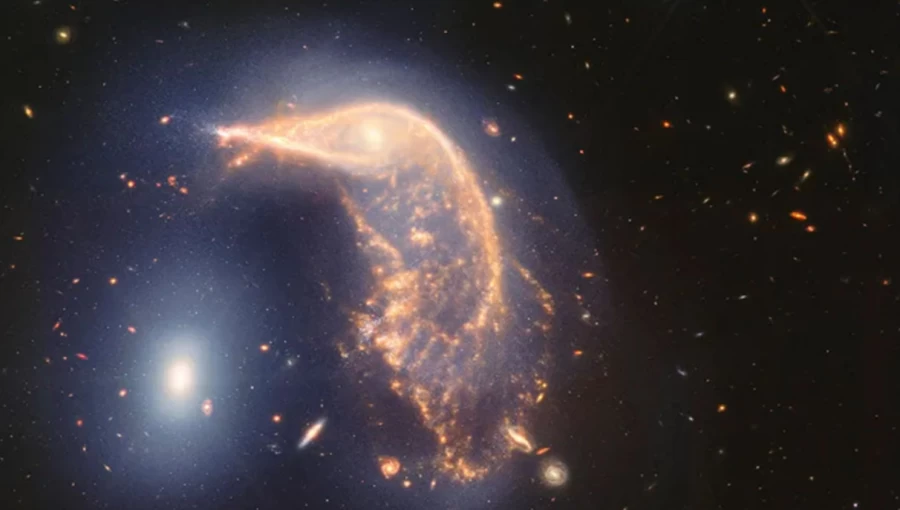NASA has released a breathtaking image captured by the James Webb Space Telescope, showcasing two galaxies that appear to be twin or paired with each other. This remarkable photograph was unveiled last Friday (July 12), coinciding with the two-year anniversary of the telescope's first images of space.
Galaxies, vast collections of gas, dust, and billions of stars, planets, and moons, are held together by the force of gravity. The twin galaxies captured in this new image are named "Penguin" and "Egg" due to their distinct shapes. The "Penguin" galaxy resembles the bird it is named after, while the "Egg" galaxy has an oval shape, reminiscent of an egg.
Launched on December 25, 2021, the James Webb Space Telescope embarked on a month-long journey, reaching its destination 1 million miles away from Earth on January 24, 2022. It began its operations in July of that year, with its first full-color image released on July 12, 2022. Over the past two years, the telescope, a successor to the Hubble Space Telescope, has provided stunning new views of the universe.
The newly released image of the twin galaxies, located 326 million light-years away from Earth, reveals the two galaxies seemingly merging with one another. Surrounded by blue stars and clouds of gas, the "Penguin" and "Egg" galaxies have been entwined for millions of years. NASA scientists predict that one day, these two galaxies will fully merge into a single entity. This interaction mirrors the future collision and merger expected between our Milky Way Galaxy and the Andromeda Galaxy, anticipated to occur in about 4 billion years.
The James Webb Space Telescope, positioned 1 million miles (1.6 million kilometers) from Earth, has revolutionized our understanding of the universe. It provides unprecedented images at infrared wavelengths, offering views previously unseen by humans.
"James Webb’s premier observatory is sending out unprecedented images of the universe at wavelengths of infrared light, the likes of which humans have never seen before," said NASA scientist Mark Clampin. "In just two years, the James Webb Space Telescope has revolutionized our view of the universe."































Comment: